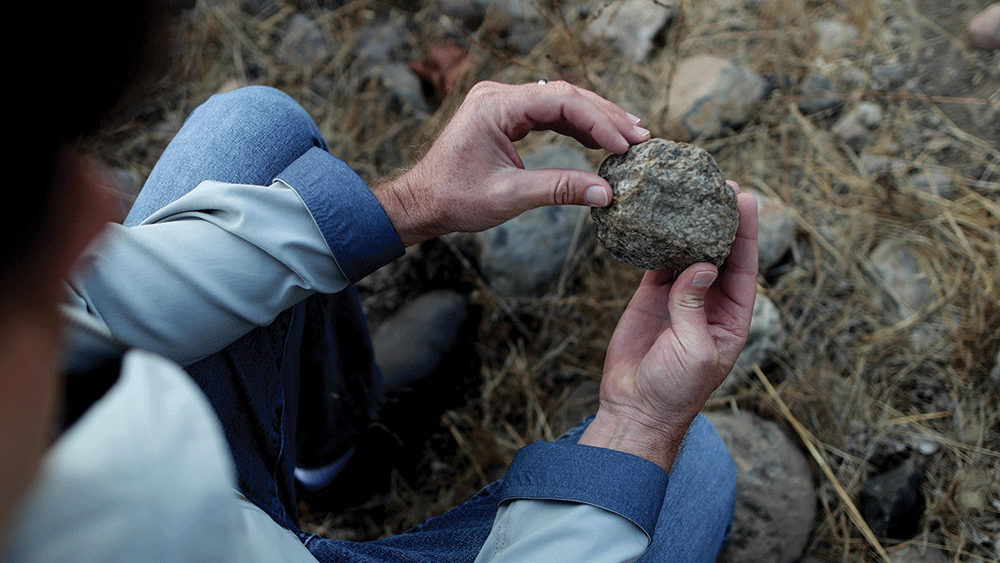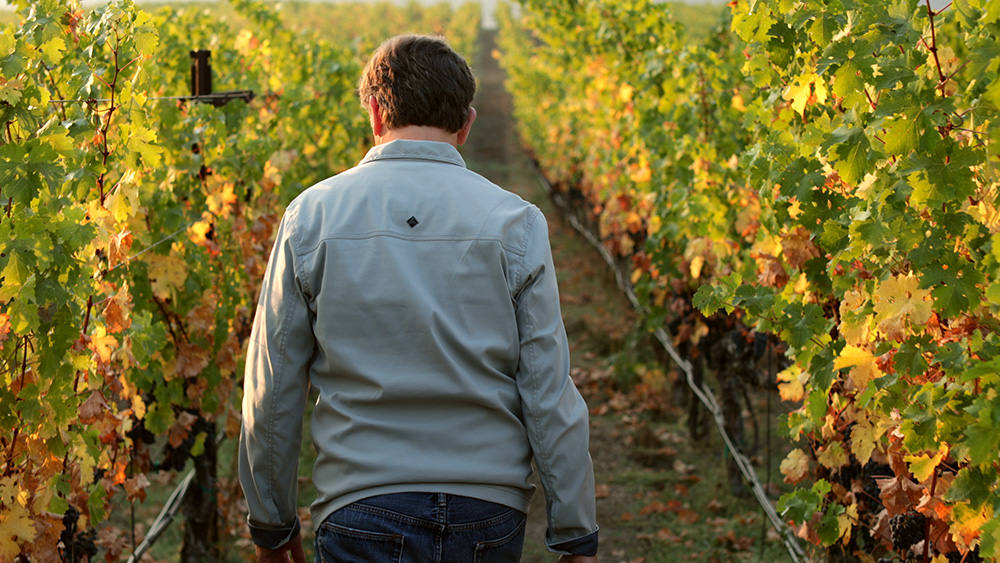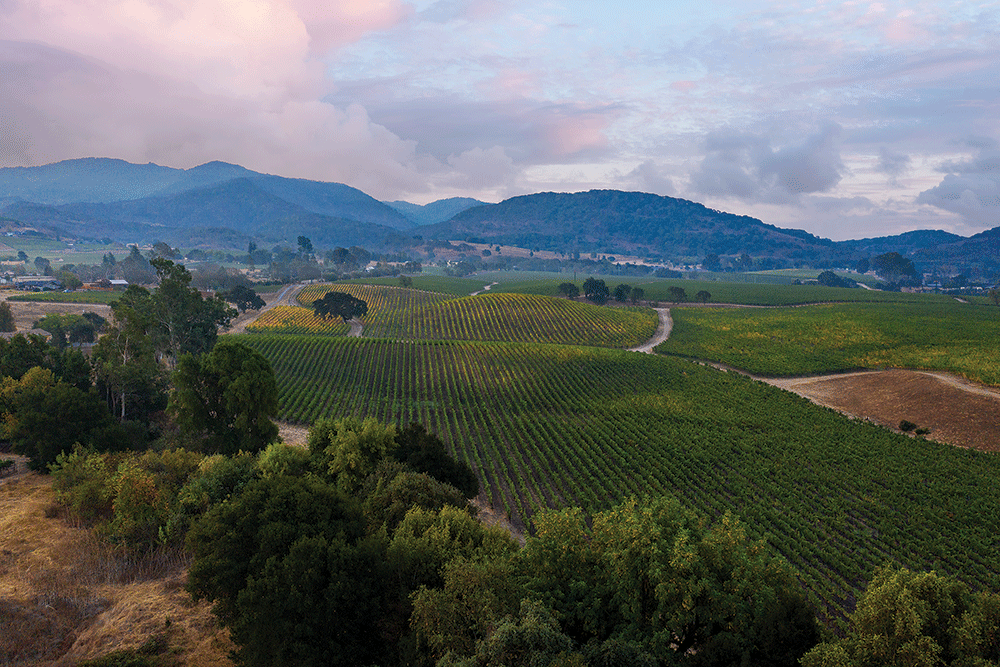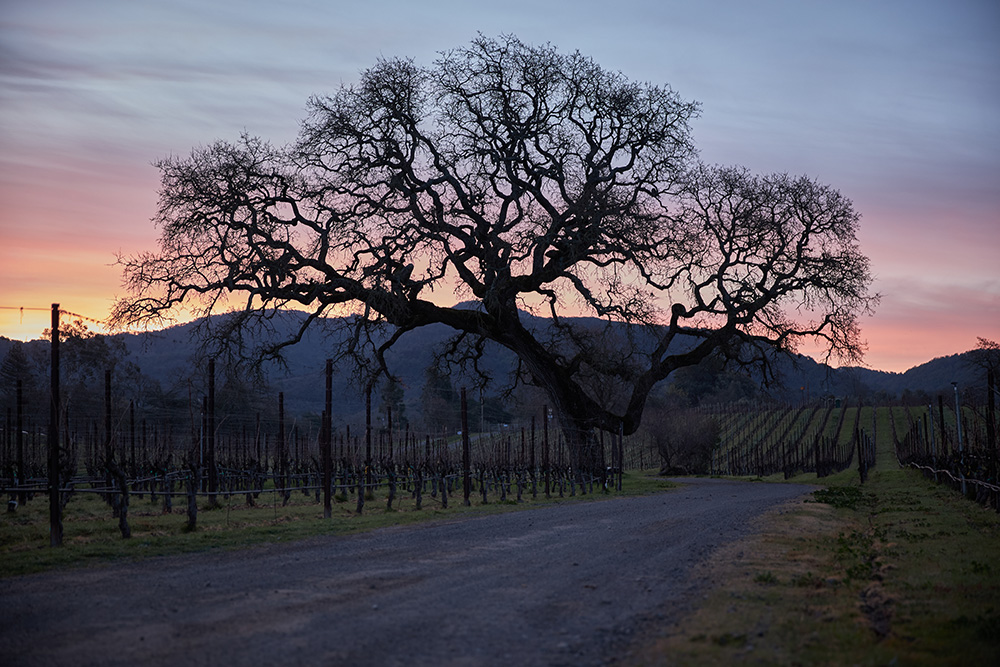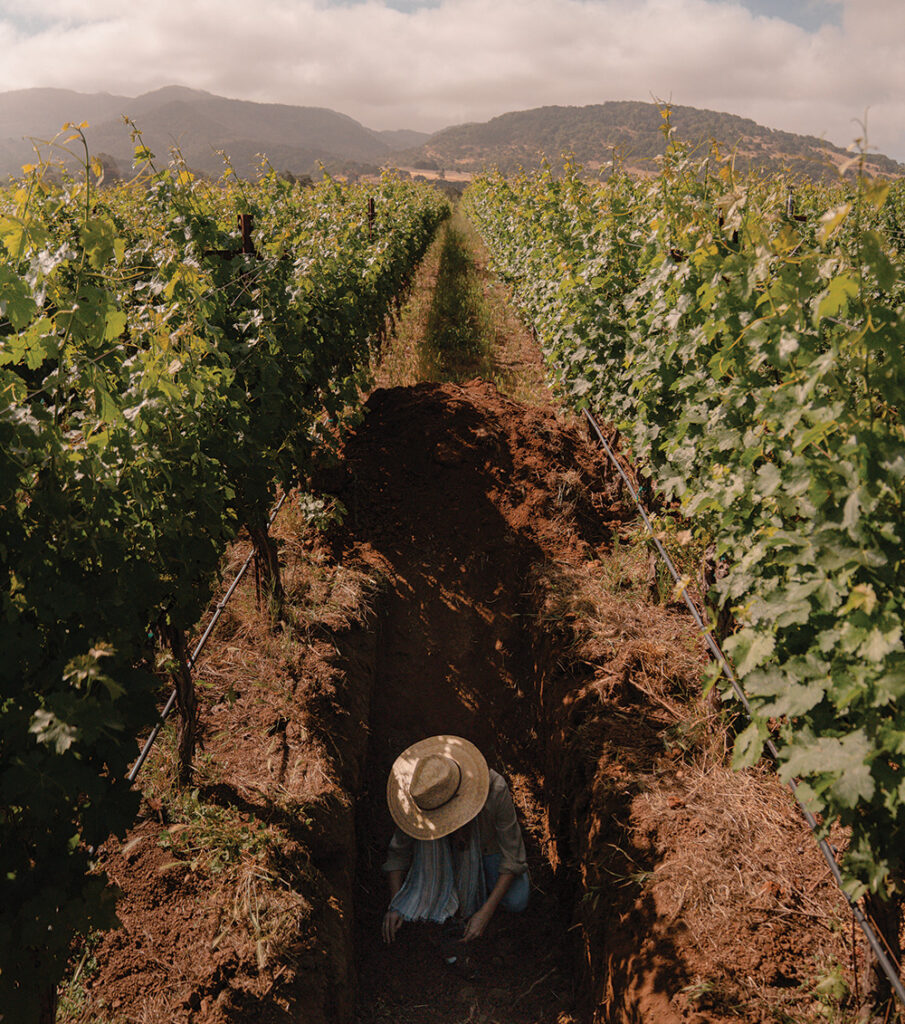IT HAPPENED IN what seemed like an instant. One minute I’m navigating some switchbacks up the side of a slope in Skyline Wilderness Park, trying to stay in step with the speedy Annie Favia, who invited me here. The next minute, I’ve got a panoramic view of the Coombsville AVA, where Favia crafts her wines, next door to Faust vineyards.
To the south, the Napa River meandered toward the San Pablo Bay, which seemed a lot closer than 11 miles away. To the north was Mount George and the rest of the Vaca Mountains, which effectively peter out in Coombsville and hem in the region on two sides. Bubbled up in the middle were vineyards, not a lot of them, fanning their amber-orange autumn plumage in the morning light. The vineyards are the “cup,” Favia says, which sits atop a “saucer” created by an ancient volcanic caldera.
I’d have loved the cup-and-saucer analogy had I heard it over the phone, but I loved it even more while gazing out at the real thing. The same is true of any great wine growing region: You can read all the text you want, look at the most detailed maps, but nothing beats putting boots on the ground. When you taste a wine from a place you’ve visited, you truly are transported back there.
